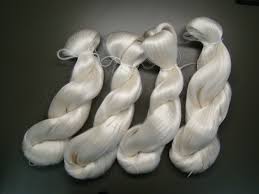The origin of silk production and
weaving is ancient and clouded in legend. The industry undoubtedly began in
China, where, according to native record, it existed from sometime before the
middle of the 3rd millennium BC. For many centuries the Chinese zealously
guarded the source and methods of production of silk, but by the 1st millennium
BC they had begun trading silk cloth abroad. Within a few centuries, caravans were
regularly carrying silk to India, Turkistan, and Persia. According to legend,
in about 140 BC, sericulture as well as silk spread overland from China to
India. By the 2nd century AD India was shipping its own raw silk and silk cloth
to Persia. (Japan, too, acquired and developed a thriving sericulture a few
centuries later.)
Persia became a centre of silk
trade between East and West under the Parthian (247 BC–AD 224). Silk dyeing and
weaving developed as crafts in Syria, Egypt, Greece, and Rome. The workers used
some raw silk from the Orient, but they derived most of their yarn by
unraveling silk fabrics from the East. Silk culture remained a secret of Asia.
Eventually a strong demand for
the local production of raw silk arose in the Mediterranean area. Justinian I, Byzantine emperor from
527 to 565, persuaded two Persian monks who had lived in China to return there
and smuggle silkworms to Constantinople in the hollows of their bamboo canes (c.
AD 550). These few hardy silkworms were the beginning of all the varieties that
stocked and supplied European sericulture until the 19th century.
Silk culture flourished in Europe
for many centuries, especially in the Italian city-states and (from 1480) in
France. In 1854, however, a devastating silkworm plague appeared. Louis
Pasteur, who was asked to study the disease in 1865, discovered the cause and
developed a means of control. The Italian industry recovered, but that of
France never did. Meanwhile Japan was modernizing its methods of sericulture,
and soon it was supplying a large portion of the world's raw silk. During and
after World War II the substitution of such man-made fibers as nylon in making
hosiery and other garments greatly reduced the silk industry. Still, silk has
remained an important luxury material and remains an important product of
Japan, South Korea, and Thailand.






